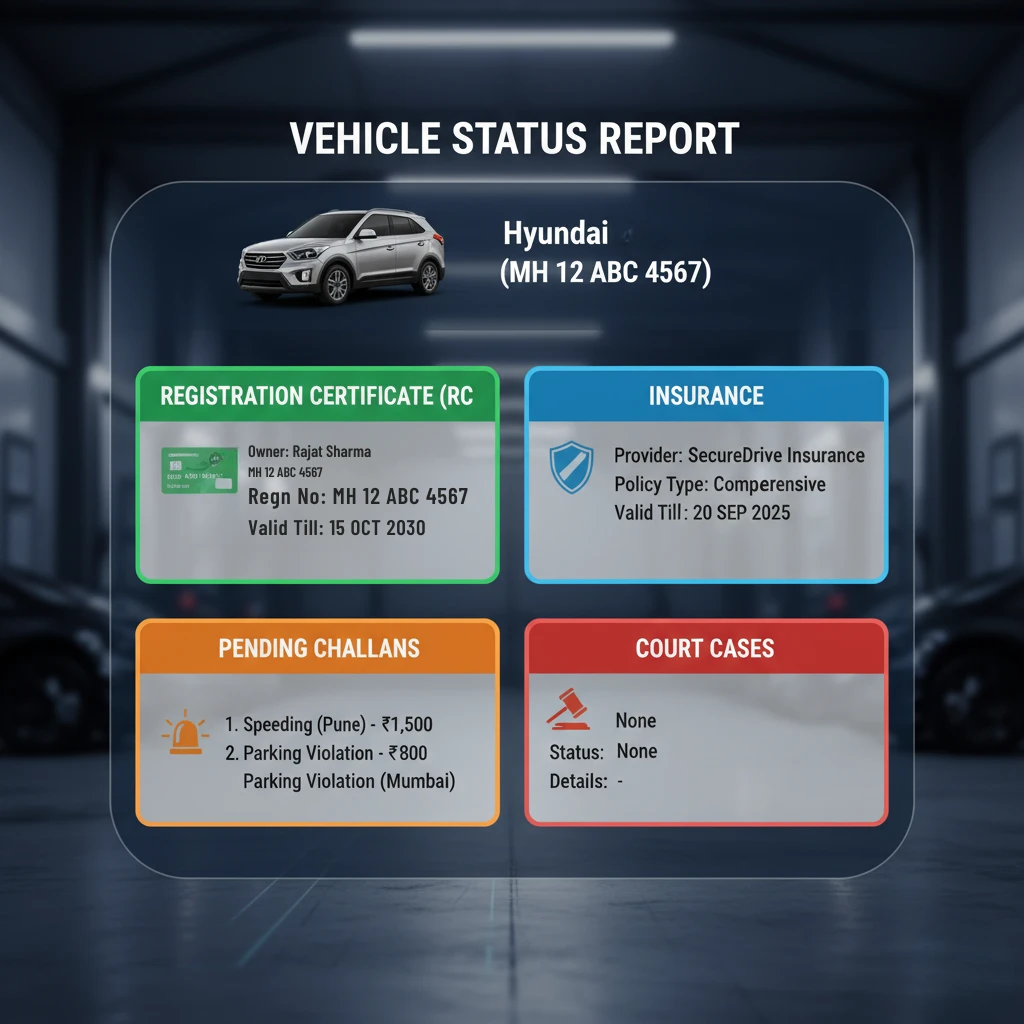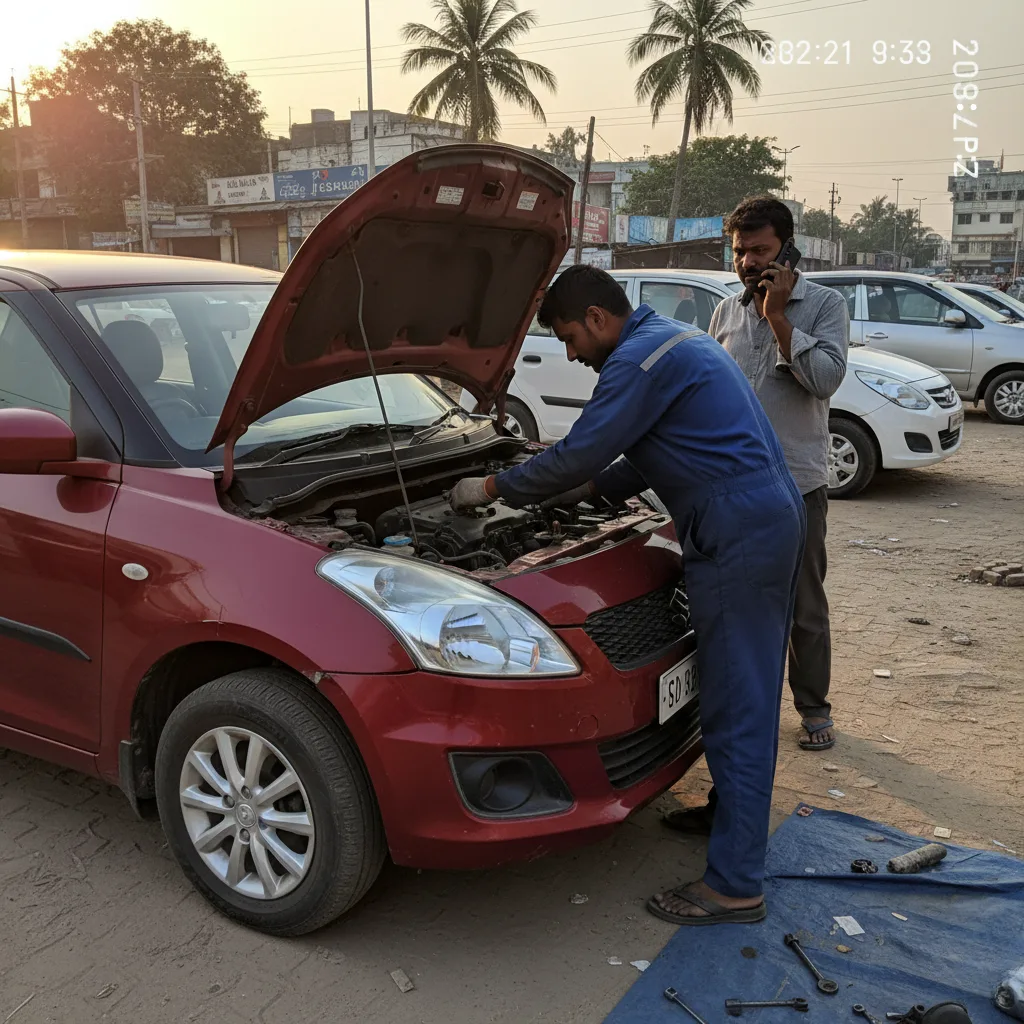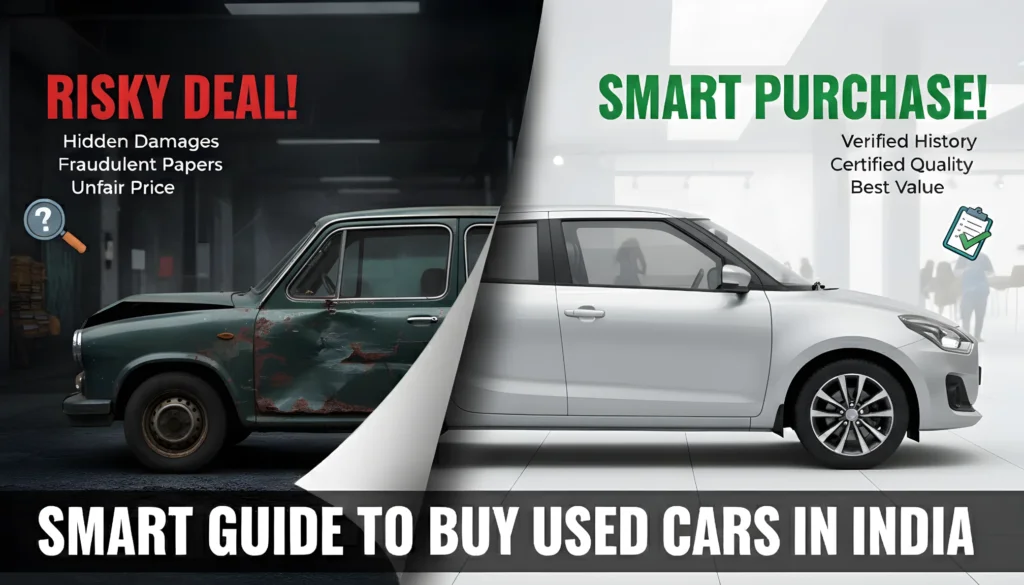How to Buy a Used Car in India Without Getting Scammed
Buying a used car in India can be one of the smartest financial decisions. New cars lose 15–20% of their value in the first year and nearly 50% in five years. For example, a car bought at ₹10 lakh may be worth just ₹5.5 lakh after five years. That’s a huge saving for second-hand buyers.
But there are hurdles. Many middle-class Indians still hesitate because of social perception or fear of scams. While you cannot change how people think, you can certainly avoid being cheated. This guide will help you buy a used car in India safely, stress-free, and scam-free, even if you are not technically skilled.
Pre-Inspection Research – Know the Car Before You See It
Every used car has a story, and some models have known issues. Doing homework before you step out can save you a fortune.
For example, the Renault Kwid is notorious for its plastic oil sump, which can crack and starve the engine of oil. Fixing this is extremely costly, and such models are best avoided. On the other hand, cars like the Hyundai Santro, where headlights may seep water, or the Renault Triber with minor tail-light seepage, have only trivial issues. These are cheap to fix and not deal breakers.
Pricing is another crucial part of research. The smartest way is to use the OLX method:

- Look up 5–10 listings for the same model and mileage.
- Take the average price.
- Subtract about ₹1 lakh to arrive at a fair offer.
Doing this ensures you don’t pay more than the car’s real market value.
Verifying History and Documents – The First Scam Shield
Once you have a shortlist, verifying the paperwork is your strongest protection.
A car with a consistent service history at an Authorized Service Center (ASC) is always safer. ASCs follow strict schedules, replace parts regularly, and keep engines in good shape. If service history shows unusual mileage drops — say, 40,000 km in three years but only 3,000 km in the fourth — that could indicate odometer tampering, a serious red flag.
Other crucial checks include:

- Registration Certificate (RC): The owner’s name must match the seller. If the car had a loan, the RC must be updated with the NOC and hypothecation removed.
- Insurance: An active policy is good. But if the car has multiple or major claims, it may have been in accidents.
- Pending Challans: Cars with unpaid traffic fines cannot be transferred. Always check state transport portals.
- Court Cases: Some vehicles are tied to legal disputes or criminal use. Avoid these at all costs.
Physical Inspection – Don’t Be Intimidated

Even without technical knowledge, a careful look can reveal plenty. Start with the engine bay. Pull out the dipstick. For petrol cars, the oil should be brown but not black. Diesel cars always have black oil, so that’s not a worry. Also check the oil level — low levels may show neglect.
Leaks are a big warning sign. Park the car, keep the engine on for 10 minutes, and then move it. Any fresh oil or fluid on the ground means trouble. Rev the engine while stationary; smoke from the exhaust is a red flag.
The body panels tell another story. Compare paint across two adjacent panels. A mismatch often means repainting due to accidents. Minor bumper repaints are fine, but mismatched doors or fenders are worrying. Rust is another deal breaker — especially underbody rust. Use your phone on a selfie stick to check hidden areas.
Glass codes are often overlooked. All windows should carry matching manufacturing codes. A changed windshield is normal, but changed side glasses suggest a crash. Tires and battery also matter — worn tires can cost ₹15,000+, and an old battery can add another ₹5,000–₹6,000.
Interiors and Test Drive – The Final Judgment
Step inside and observe. The cabin should feel consistent with the age of the car. Overly sunken or torn seats, broken switches, or dirty upholstery show rough usage. Check every button — windows, AC, infotainment, horn, lights. Any critical electronic failure is a deal breaker.
The test drive is where the truth comes out. Spend at least 20–30 minutes in varied conditions. On city roads, see how the clutch, gearbox, and steering respond. On an open stretch, check high-speed stability and braking.
Things to watch out for:

- Steering: Car pulling to one side = alignment issue (fixable).
- Brakes: The car should stop straight. Wobbling = red flag.
- Gearbox: Slight notchiness is normal on older cars, but grinding gears are not.
- Clutch: A stiff or slipping clutch means replacement is due soon.
E20 Fuel Concerns – Should You Worry?
India’s move to E20 petrol (20% ethanol blend) has confused many buyers. The truth is, for most used cars under 10 years old, it’s not an immediate concern. A five-year-old petrol car will easily run another six or seven years without ethanol-related issues. Diesel and CNG cars are largely unaffected. Even if E20 does affect components, it usually happens much later in the car’s life. So rejecting a good deal solely for this reason does not make sense.
Safer Brands to Consider
While every used car should be checked carefully, some brands inspire more confidence. Toyota, Honda, Hyundai, and Maruti Suzuki are the most reliable in India. Their engines age well and spare parts are widely available. Renault, Volkswagen, and Skoda offer good driving feel but are costlier to maintain, especially as they age. When it comes to resale, models like the Toyota Innova, Fortuner, Maruti Swift, and Hyundai Creta remain strong performers.
Final Word – Scam-Free Car Buying
The Indian used car market is full of opportunities, but also full of traps. With the right approach, you can get a vehicle that feels almost new at half the price. The formula is simple: research the model, verify documents, inspect carefully, and always take a proper test drive.
Think of it as a traffic light system:
- Green = Safe to Buy
- Orange = Negotiate the Price
- Red = Walk Away
Follow this checklist and you won’t just save money, you’ll also protect yourself from scams that make so many people nervous about used cars.




Pingback: Exciting October 2025 Car Launches In India – SUVs To Performance Icons - Mechhelp